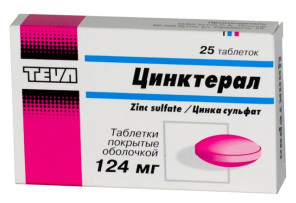Omega-3 and omega-6 are essential fatty acids
Unsaturated fatty acids are represented by linolenic( omega-3) and linoleic( omega-6) acid. These fatty acids do not have the ability to be synthesized by the body, so they are called irreplaceable or essential, and must come into the body from food.
Essential fatty acids are also known as vitamin F. Many sources consider the term "vitamin F" obsolete, arguing that it is a hormone-like action. However, both vitamin D derivatives and retinoic acid( active form of vitamin A) also perform a regulatory role in the body and are in fact hormones [1].
Several designations can be used to refer to unsaturated fatty acids. According to the traditional nomenclature, the number of carbon atoms( for example, for linoleic acid C18) is indicated, then the colon field indicates the number of double bonds( C18: 2).The position of double bonds is indicated by the field of the Latin delta, counting is from the carboxyl group( C18: 2 Δ 9,12).There is another nomenclature of unsaturated fatty acids, when the position of the double bond with respect to the methyl group is denoted by ω( omega).According to this classification, all natural polyunsaturated fatty acids are divided into families of omega-3, omega-6 and omega-9.
The family of omega-3 PUFAs includes: α-linolenic, eicosapentaenoic( EPA), proof-hexaenic( DHA) acid.
Family of omega-6 PUFAs include: linoleic, arachidonic( AK), docosapentaenoic acid.
Content
- 1
- 2 functions in the body daily requirement and dietary sources
- 3 hypo-and vitamin
- 4 Hypervitaminosis
functions in the body
Numerous PUFA effects in the body are explained by two main facts:
- PUFAs are essential for the construction of biological membranes of all body cells;In the body of
- eykozontrienovoy( C20: 3, ω-6), arachidonic( eicosatetraenoic, C20: 4, ω-6), timnodonic( eicosapentaenoic, C20: 5, ω-3) acids are synthesized important biologically active substances - eicosanoids. Reserve eikosanoids can not, so cells must constantly synthesize them from the incoming omega-3 and omega-6 fatty acids.
Eating PUFA results in [1] [2] [3]:
- reducing blood viscosity;
- reduced thrombogenesis;
- antiatherogenic effect( decrease in the amount of LDL and increase in HDL);
- improve the blood supply of tissues;
- improvement in the condition of blood vessels;
- stimulation of immune defense reactions;
- stimulation of antitumor immunity;
- anti-inflammatory effect;
- and others.
first beneficial effects of polyunsaturated fatty acids on the cardiovascular system have been identified among residents of Greenland( Inuit), who almost did not suffer from abnormalities of the cardiovascular system. Other health indicators( blood pressure, pulse, triglyceride level) were also at a high level [5].Such an effect on the state of health had a diet consisting mainly of fatty fish, rich in omega-3 and omega-6.
Daily requirement and food sources
Rich food sources of omega-3 and omega-6 are vegetable oils. The qualitative and quantitative composition of the oil is of key importance. In this case, omega-3 fatty acids have more biological value. Among the vegetable oils absolute leader in omega-3 oil is linseed, comprising 70-75% of linolenic acid to 1% in sunflower oil. There are positive data on the use of linseed oil as a prophylactic and therapeutic agent for atherosclerosis, as well as its successful use in cancer, diabetes, weakening the immune system, treatment of skin diseases [2].
Give preference to vegetable oils that do not use thermal treatment, that is, oils obtained by cold pressing. Heating oils to high temperatures changes their structure, worsening their quality and utility for the body. There is some evidence that the use of refined oils can increase the risk of cancer [4].
Other food sources of PUFAs are fatty fish( salmon, herring, sardines, tuna, trout, etc.), fish oil, shellfish, nuts.
The content of omega-3 in food products:
( approximate availability of 100 g)

Omega-6 content in food products:
( approximate availability of 100 g)

PUFAs are very sensitive to light, heat and contact with air. In this case, toxic products are formed. It is recommended to store the product according to the instructions, avoiding direct sunlight, contact with air, etc. To protect the vitamin F it is recommended to use it together with the basic vitamins-antioxidants( vitamin E, β-carotene, selenium).It is recommended to use vitamin F together with zinc and vitamins B6 and C [1].
Hypo-and avitaminosis
In the absence of PUFA, the functions of biological membranes and lipid metabolism are disturbed in food.
The lack of fatty acids is most often caused by:
- malnutrition, starvation;
- is a violation of lipid absorption in the intestine.
Insufficiency of PUFA is most often seen in children under one year old. Symptoms of hypovitaminosis are manifested by lag in growth, insufficient weight, skin pathologies( peeling, thickening of the epidermis), diarrhea. In adults, pathology of the reproductive system, skin, hair, follicular hyperkeratosis can be observed.
Hypervitaminosis
Vitamin F does not show toxicity, although excess intake of liquid fat can adversely affect pancreas and liver function [1].
However, some medical studies indicate that excessive consumption of omega-6 fats with insufficient intake of omega-3 can provoke the development of a number of diseases. The diet of modern man is built in such a way that he consumes more linoleic acid, and receives less linolenic acid. This ratio can reach 20: 1, when the optimal is 4: 1( 4 parts ω-6 to one part ω-3).Such an imbalance in the consumption of various PUFAs can cause disturbances in metabolic processes, and lead to the development of diseases [5].
Sources:
- MGMSU them. AI Evdokimova, team of authors, "Vitamins", 2014.
- TS Morozkina, AG Moiseenok "Vitamins", 2002;
- VG Liflyandsky "Vitamins and minerals", 2010;
- TP Emelyanova "Vitamins and minerals: Complete Encyclopedia", 2000;
- Wikipedia - Free Encyclopedia;
- Edaplus.info is the source of illustrations for the article.
Recommended for viewing:



